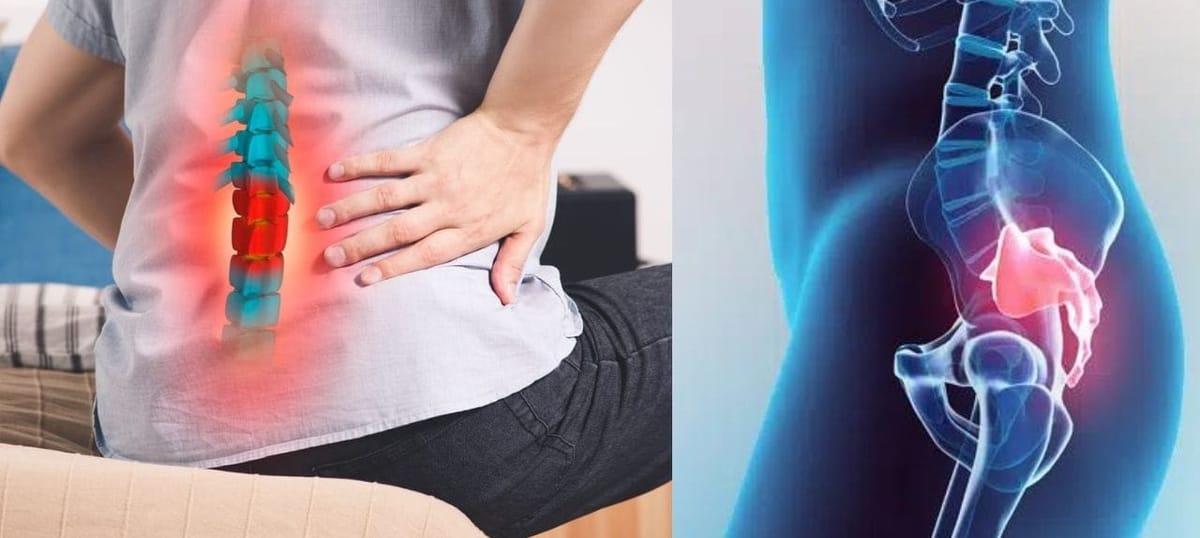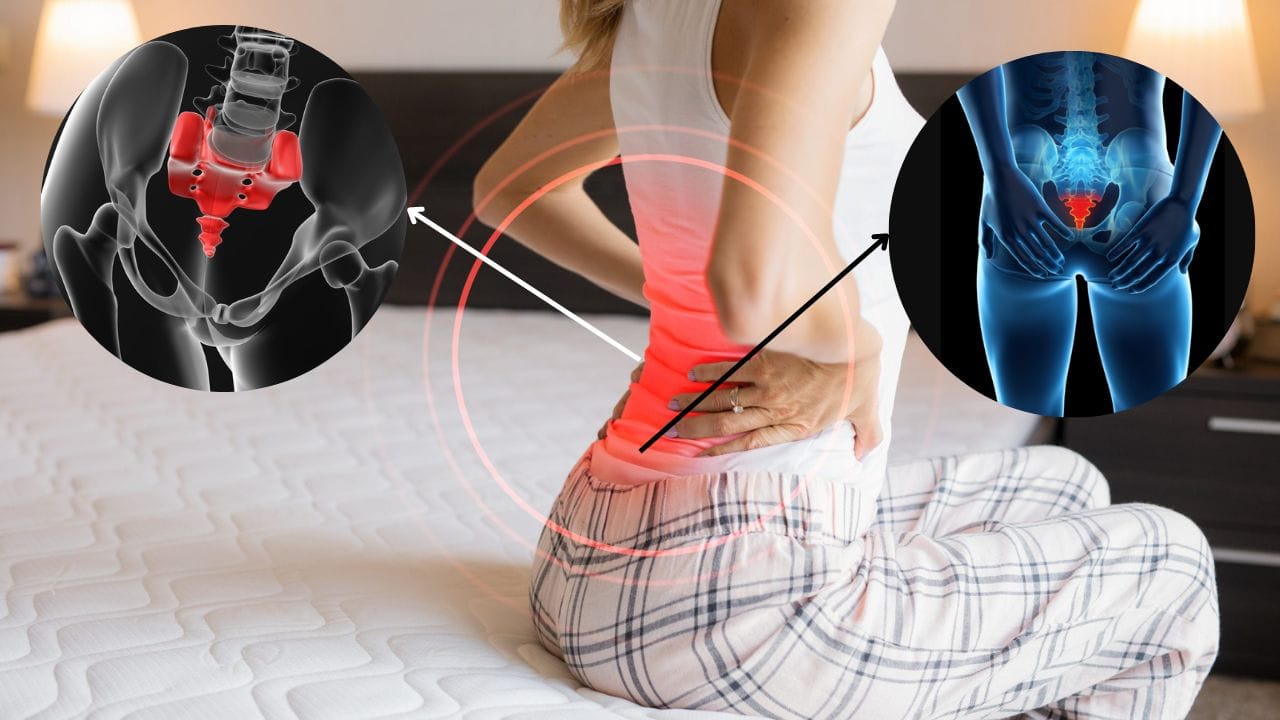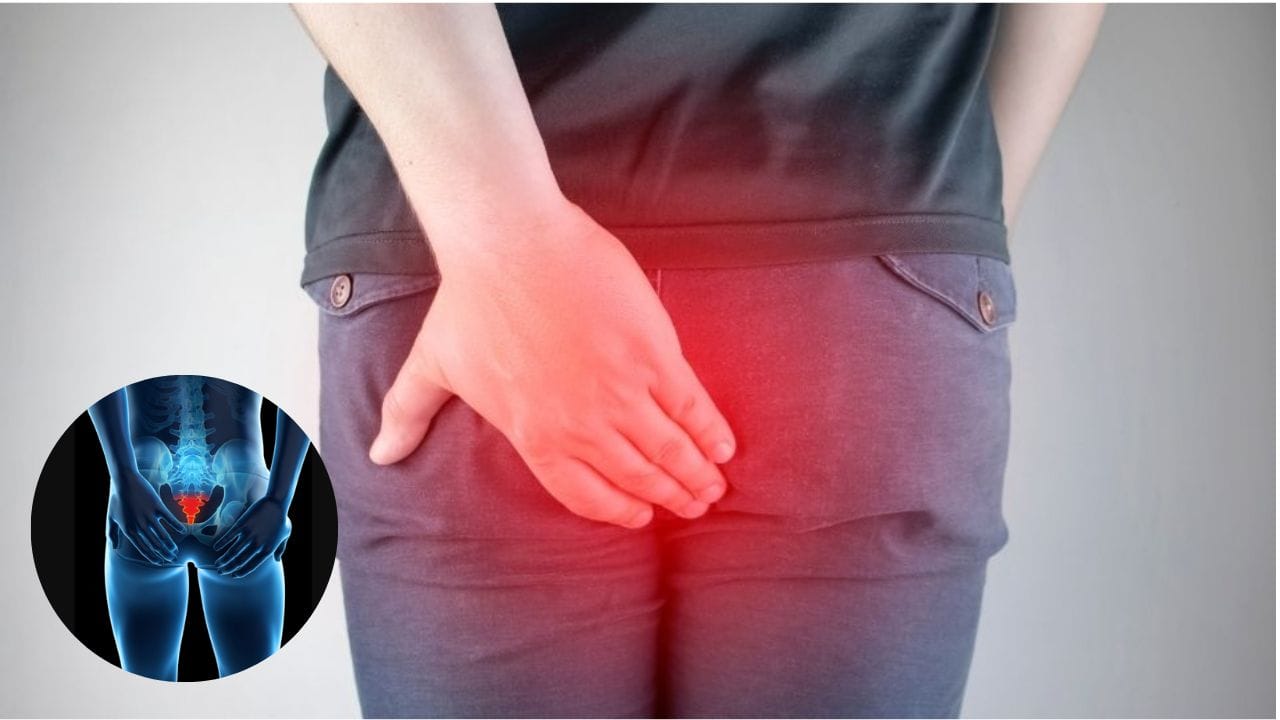Can Tailbone Pain Radiate To The Buttocks?
Can Tailbone Pain Radiate To The Buttocks? Read this article to understand how this referred pain may be a result of inflammation or injury, highlighting the interconnected nature of discomfort in the tailbone region.

Tailbone pain, also known as coccydynia, can be a real pain in the... well, you know. It's that nagging ache at the base of your spine that doesn't seem to let up. But can this discomfort radiate to your buttocks? Let's dive into tailbone pain's anatomy, causes, and treatments to see how far its influence can spread.
Key Takeaways
- Tailbone pain can radiate to the buttocks and surrounding areas due to interconnected nerves and muscles.
- Proper diagnosis and treatment are essential for managing tailbone pain effectively.
- Lifestyle adjustments and specific exercises can help alleviate symptoms and prevent future occurrences.
What is Tailbone Pain?
Tailbone pain, also known as coccydynia, is that annoying ache you feel at the very bottom of your spine. It's the kind of discomfort that can make sitting, standing up, or even bending over a real pain in the butt—literally! Your tailbone, or coccyx, is a small triangular bone at the base of your spine, and when it gets bruised, strained, or irritated, it can cause soreness that lingers.
While it might sound funny, tailbone pain can be no joke, especially after sitting for long periods or a fall. Luckily, there are ways to treat it and get back to feeling comfortable again!

It's more common in women than men, possibly due to differences in pelvic shape and the stresses of childbirth.
The Anatomy of the Tailbone Area
The tailbone, or coccyx, is the small, triangular-shaped bone at the very bottom of your spine. Think of it as the "anchor" of your back. Though it may be tiny, it plays an important role in supporting your body when you sit.
Nestled between your buttocks, this little bone is connected to various muscles, ligaments, and tendons that help with movements like standing, sitting, and even balancing. While we don't use our tailbone like some animals do (no wagging tails here!), it's still essential for posture and stability. Fun fact: it's a remnant from when our distant ancestors had tails!
Can Tailbone Pain Radiate to the Buttocks?
Yes, tailbone pain can radiate to the buttocks! Imagine your tailbone, also known as the "coccyx," as the tip of a domino chain in your lower back. When it's irritated or injured, the discomfort can travel beyond that small spot and affect the muscles and tissues around it—particularly in your buttocks. Think of it as the body’s way of saying, “Hey, everything’s connected down here!”
This happens because the tailbone is part of a network of muscles, ligaments, and nerves. When it hurts (like from sitting too long, a fall, or even childbirth), the tension spreads to nearby areas, causing pain in the buttocks. It’s like a ripple effect! So, if your tailbone is aching and your backside feels sore, they’re likely linked.
The good news? Simple home remedies like using a cushion when sitting, taking breaks, and applying heat can help ease the pain. But if it sticks around for too long, it's always a smart move to see a doctor.

This can result in a dull, throbbing sensation that extends into the buttocks.
Common Causes of Tailbone Pain
Tailbone pain can be caused by a variety of factors, including trauma from a fall, prolonged sitting on hard surfaces, degenerative joint changes, or as a result of childbirth. In some cases, the exact cause of tailbone pain may be unknown, which is referred to as idiopathic coccydynia.
Symptoms Accompanying Tailbone Pain
Apart from the obvious discomfort at the base of the spine, symptoms of tailbone pain can include a worsening of pain when sitting, standing up from a seated position, or during bowel movements. The pain may also be accompanied by tenderness in the tailbone region.
Diagnosing Tailbone Pain
To diagnose tailbone pain, a healthcare provider will typically conduct a physical examination and may order imaging tests such as an X-ray or MRI. These tests help to rule out other conditions and confirm the diagnosis of coccydynia.
Treatment Options for Tailbone Pain
Treatment for tailbone pain often starts with conservative methods such as anti-inflammatory medications, cushioned seating, and ice or heat therapy. If these approaches don't provide relief, physical therapy or injections may be recommended.
The Role of Physical Therapy
Physical therapy can be an effective treatment for tailbone pain.

A physical therapist may use techniques such as manual manipulation, stretches, and strengthening exercises to alleviate pain and improve function.
When Surgery is Considered
Surgery for tailbone pain is rare and typically considered only when all other treatments have failed. The procedure, called a coccygectomy, involves the removal of part or all of the coccyx.
This is usually done in a hospital setting under general anesthesia. The recovery period can be anywhere from a few days to several weeks.
Lifestyle Adjustments to Manage Tailbone Pain
Making simple lifestyle adjustments, such as using a donut-shaped cushion when sitting and avoiding prolonged periods of sitting, can significantly reduce tailbone pain. It's also important to maintain good posture to minimize pressure on the coccyx.
Exercises to Alleviate Tailbone Pain
Certain exercises can help strengthen the muscles around the tailbone and improve flexibility, which may reduce pain.

Pelvic floor exercises and gentle stretching are often recommended.
The Impact of Diet on Tailbone Pain
While diet may not directly affect tailbone pain, maintaining a healthy weight can reduce the stress on the coccyx. A balanced diet can also support overall health and aid in the healing process. Avoiding foods that are high in salt and sugar can also help.
Alternative Remedies for Tailbone Pain
Some individuals find relief from tailbone pain through alternative remedies such as acupuncture, massage, or chiropractic care. These treatments can help relax the muscles and improve blood flow to the affected area.
In addition, certain supplements, such as turmeric, can help alleviate pain and inflammation.
Understanding Chronic Tailbone Pain
Chronic tailbone pain is when the discomfort persists for more than three months. This type of pain may require a more comprehensive treatment approach and possibly the involvement of a pain specialist.
The Psychological Effects of Tailbone Pain
Chronic pain can have a significant psychological impact, leading to issues such as depression or anxiety. Addressing the emotional aspects of living with tailbone pain is an important part of the healing process.
Preventing Future Tailbone Pain
Preventing future episodes of tailbone pain involves being mindful of activities that put pressure on the coccyx, maintaining good posture, and staying active to keep the muscles around the tailbone strong and flexible.
When to See a Doctor for Tailbone Pain
If tailbone pain is severe, persistent, or accompanied by other symptoms such as numbness or loss of bowel or bladder control, it's important to see a doctor. These could be signs of a more serious condition.
Summary
Tailbone pain can indeed radiate to the buttocks and even further, due to the interconnected nature of the muscles and nerves in the area. Understanding the causes, symptoms, and treatment options is crucial for those suffering from this condition. With the right approach, including lifestyle changes, exercises, and possibly medical intervention, relief from tailbone pain is achievable.
FAQs
Q: How long does tailbone pain typically last?
A: Tailbone pain, also called coccydynia, can be quite a pain in the... well, you know where! As for how long it lasts, it depends on what's causing the discomfort.
If it's from a minor injury like falling on your tailbone or sitting awkwardly for too long, the pain usually lasts for a few days to a few weeks. In these cases, some TLC (think: soft cushions, warm baths, and avoiding hard seats) can make things better quickly.
But if the pain is more persistent—like from chronic inflammation or repeated injury—it can last months or even longer. In such cases, seeing a doctor or a specialist might be necessary to figure out what’s going on and how to treat it.
So, for most people, it’s not forever—just a temporary discomfort. But if it’s overstaying it's welcome, don’t hesitate to get professional help!
Q: Can sitting too much cause tailbone pain?
A: Yes, sitting for long periods can cause tailbone pain! Here’s the fun part: imagine your tailbone (or coccyx, as the fancy folks call it) as the cushion-less tip of your spine. When you sit for too long, especially on hard surfaces, it’s like putting all your weight on a tiny point without giving it a break — ouch!
Think of it like this: If you sat on a thin stick all day, you’d feel sore, right? Well, your tailbone feels the same when you sit for hours without shifting or getting up. This pressure can lead to inflammation, bruising, and discomfort in the coccyx area.
The solution? Stand up and stretch now and then. Walk around, do some light stretches, or use a comfy seat cushion to take the load off your tailbone. Your body (and tailbone) will thank you for it!
Q: Is tailbone pain a sign of something more serious?
A: Tailbone pain can be a literal pain in the...well, tail! Most of the time, it’s nothing too serious and comes from things like sitting too long on a hard surface, a little fall, or even poor posture. It usually goes away with some rest, a comfy cushion, or some gentle stretches.
But, if your pain sticks around for weeks, gets worse, or comes with other symptoms like fever, numbness, or shooting pain down your legs, it could be your body’s way of waving a red flag. In rare cases, persistent tailbone pain might point to conditions like infections, fractures, or even cysts.
So, while it’s probably nothing to worry about, don’t ignore it if it starts acting up big time. When in doubt, a visit to the doctor can help you get back to sitting comfortably again!
